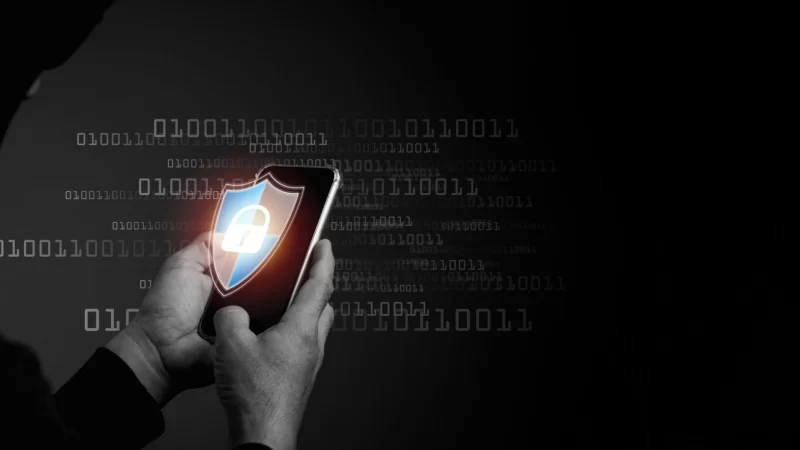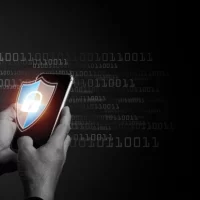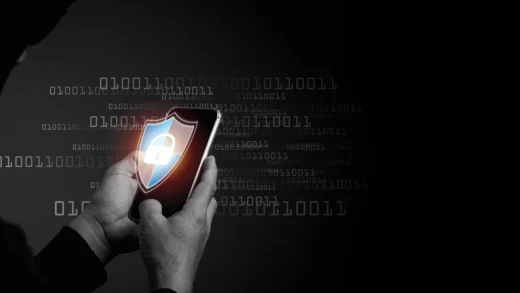What Is Considered A Threat On Social Media? 12 Types Of Threats

Step into the dynamic realm of social media, where every scroll, like, and share unveils a world of connections and possibilities.
But beneath the glittering surface lies a darker underbelly that we must explore today – the realm of online threats.
So, grab your digital magnifying glass as we delve into the captivating yet perilous landscape of threats on social media.
Threat On Social Media
In the sprawling landscape of social media, where tweets, posts, and messages crisscross the globe in a matter of seconds, it’s easy to get lost in the sea of information and interactions.
But amidst the laughter, inspiration, and cat videos lie shadows that cast a dark cloud over the digital realm – threats on social media.
So, let’s put on our digital detective hats and dive into what exactly constitutes a threat in this brave new world.
Digital Threat
A threat on social media can be broadly defined as any online expression or behavior that poses harm, fear, or discomfort to individuals or groups.
These threats can take various forms, ranging from explicit hate speech and cyberbullying to subtler tactics like spreading misinformation and engaging in online scams.
What’s concerning is that the very nature of social media often amplifies these threats, potentially reaching a massive audience in mere moments.
Threats Facts And Incidents
Cyberbullying’s Dark Cloud
The rise of cyberbullying has left scars on many lives. In a tragic incident, the story of Megan Meier gained attention.
A fake social media profile was created to befriend Megan, a teenager, only to cruelly manipulate her emotions, eventually leading to her tragic suicide in 2006.
Fake News Spiral
Fake news and disinformation have become all too familiar in today’s digital landscape.
The “Pizzagate” conspiracy theory is a prime example, where false claims circulated on social media led to a gunman opening fire in a Washington, D.C. pizzeria, believing it was linked to a non-existent child trafficking ring.
Twitter’s Toxic Turn
Online threats can also be political and societal. Actress Leslie Jones was subjected to relentless online harassment and racial slurs, leading her to leave Twitter temporarily.
The incident highlighted the unchecked culture of hate on social platforms.
Data Breach Dilemmas
Personal privacy is at constant risk in the digital age.
Posted on the New York Times, the Cambridge Analytica scandal rocked Facebook as it was revealed that the data of millions had been harvested without consent for political purposes.
Unveiling The Mechanics | How Social Media Threats Happen?
You’re scrolling through your favorite social media platform, enjoying updates from friends and the latest memes, when suddenly, your digital safe haven takes an unexpected turn.
Threats on social media don’t just appear out of thin air; they are the result of intricate interactions and motivations that weave a web of digital danger.
Let’s delve into the mechanics of how these threats unfold in the digital realm.
- Anonymity: The Double-Edged Sword
The cloak of anonymity emboldens some individuals to step beyond the boundaries of civil discourse.
When people can hide behind pseudonyms or fake profiles, they might engage in behaviors they’d avoid in face-to-face interactions.
This anonymity can amplify hate speech, trolling, and cyberbullying, creating an environment ripe for threats.
- Rapid Information Spread: The Domino Effect
Social media’s hallmark is its speed – information travels faster than a blink. This rapid dissemination means threats can go viral swiftly, reaching countless users before anyone can hit the brakes.
A single provocative post can snowball into a mass of shares, comments, and reactions, causing a tidal wave of concern.
- Echo Chambers and Polarization
Social media often fosters the formation of echo chambers, where people are exposed to content that aligns with their existing beliefs.
These echo chambers can fuel extremism and hostility, nurturing an environment where threats are not only born but nurtured and reinforced.
- Invisibility of Consequences
Behind the screen, the immediate consequences of one’s actions may not be as evident. People might not see the hurt their words cause or the ripple effect of their threats.
This disconnect between action and consequence can embolden individuals to cross ethical boundaries they wouldn’t cross in the real world.
- Influence of Algorithms
Algorithms play a pivotal role in shaping our social media experiences. They curate our feeds based on our behaviors, preferences, and interactions.
However, these algorithms can also inadvertently amplify divisive content, pushing users towards extreme viewpoints and contributing to the proliferation of threats.
- Privacy Oversights and Data Vulnerabilities
Personal information shared on social media can become fodder for threats.
Whether it’s a malicious actor exploiting publicly available information for a cyberattack or Doxxing (publicly revealing private information), the lack of awareness about privacy settings can make users susceptible to digital threats.
- Emotion-Fueled Reactions
In the heat of the moment, emotions can cloud judgment. People might post threats or harmful content driven by anger, frustration, or even a warped sense of humor.
These emotionally fueled actions can have serious consequences, even if the initial intent was fleeting.
12 Types Of Social Media Threats
Below are the various types of social media threats, let’s discuss one by one;
1. Cyberbullying And Harassment
In the digital symphony of likes, shares, and emojis, there’s a dissonant note that disrupts the harmony: cyberbullying and harassment.
These aren’t just abstract concepts; they’re real shadows that cast gloom over the vibrant world of social media. Let’s put it in perspective:
- Cyberbullying
Imagine having your own personal sanctuary invaded by a barrage of hurtful comments and threatening messages.
Cyberbullying takes the playground cruelty of the past and transfers it to the digital realm, where anonymity can embolden aggressors.
- Harassment
Now, think about the feeling of being persistently followed, even in your virtual space.
Online harassment involves unwelcome interactions that can range from invasive messages to relentless stalking. The digital domain provides a veil for those who seek to intimidate or dominate.
2. Phishing And Scams
Ahoy, sailors of the internet! Beware the treacherous waters of phishing and scams:
- Phishing
Imagine receiving an email that appears to be from a trusted source, only to discover it was a trap to steal your personal information.
Phishing emails are like sly anglers, baiting you with seemingly legitimate offers or urgent requests. Clicking that innocent-looking link could expose you to a world of trouble.
- Scams
Now, picture a con artist dressed in digital camouflage, ready to play on your emotions.
Scams capitalize on our desires and fears, promising wealth, love, or security, only to disappear once they’ve reeled you in.
Whether it’s the promise of a lottery win or a heart-wrenching sob story, always approach offers with a healthy dose of skepticism.
3. Fake News And Disinformation
Welcome to the digital theater where truth and deception take center stage:
- Fake News
Think of fake news as the modern-day jester, appearing to entertain but often sowing confusion.
It disguises itself as legitimate news, spreading misinformation that can range from amusing hoaxes to dangerous conspiracy theories.
- Disinformation
Now imagine puppeteers pulling strings behind a curtain, orchestrating a grand illusion. Disinformation is the mastermind behind the scenes, manipulating information to serve hidden agendas.
Its goal is to shape perceptions and influence opinions, often with nefarious intentions.
4. Online Hate Speech
Ah, the virtual cosmos of social media, where connections span continents and ideas flow freely. Yet, amidst this realm of boundless interaction, there’s a storm brewing – online hate speech.
It’s like a thundercloud, casting a shadow over the promise of open discourse. Let’s decipher its complexity:
- Defining Hate Speech
Imagine participating in a conversation only to be met with a torrent of bigotry and hostility.
Hate speech thrives on spreading discrimination, prejudice, and intolerance based on attributes like race, gender, religion, or nationality. It’s the venomous underbelly of the digital world.
- Destructive Impact
Now, think of the emotional toll of encountering hate speech.
It erodes the inclusive fabric of online communities, discouraging healthy conversations and promoting division.
For individuals targeted by hate speech, the virtual space can turn into a battleground of identity and self-worth.
5. Privacy Violations And Doxxing
In the labyrinth of social media, where personal stories intertwine, there’s a lurking threat – privacy violations and doxxing.
These digital shadows pry into the most intimate corners of our lives:
- Privacy Intrusions
Imagine sharing a fragment of your life online, only to realize it’s turned into public property.
Privacy violations involve the unauthorized sharing of personal information, exposing individuals to a multitude of risks.
- The Art of Doxxing
Now, envision your personal details scattered like breadcrumbs across the internet.
Doxxing is the sinister act of revealing private information about someone, often with malicious intent. It transforms the digital landscape into a hazardous maze.
6. Impersonation And Fake Profiles
In the realm of digital masks, where online identities can be as fluid as water, there exists the art of impersonation:
- Crafting Deception
Imagine someone assuming your digital identity, posting content in your name, or communicating with others as if they were you.
Impersonation thrives on these acts of deception, blurring the lines between authenticity and fabrication.
- Emergence of Fake Profiles
Now, picture a web populated by counterfeit personas. Fake profiles are digital doppelgängers, masquerading as real individuals or entities.
Whether for personal gain, manipulation, or even cyberbullying, these fake profiles are a common tool in the digital trickster’s arsenal.
7. Trolling And Provocation
Ah, the digital playground where ideas clash, discussions ignite, and interactions dance like fireflies in the night.
Yet, within this tapestry of connections, there’s a certain group of mischief-makers – the trolls.
These digital tricksters and their provocations have become synonymous with the online realm. Let’s explore this:
- Meet the Trolls
Imagine a mischievous imp gleefully causing chaos.
Trolls are individuals who intentionally post disruptive, inflammatory, or offensive content to provoke strong reactions and disrupt conversations.
They thrive on sowing discord and inciting emotional responses.
- The Art of Provocation
Now, envision someone subtly pushing your buttons, like a puppeteer orchestrating a dance.
Provocation involves goading others into emotional responses or heated arguments. It’s a skill that trolls have mastered, turning discussions into battlegrounds.
8. Reputation Damage
In the interconnected world of social media, your digital reputation is a delicate flower susceptible to the winds of change. Yet, some wield the power to tarnish it:
- Defamation Unleashed
Imagine someone spreading false information about you, casting doubt on your character or integrity.
Defamation in the digital realm can lead to irreversible damage to your reputation, affecting both your personal and professional life.
- Public Shaming
Now, picture a scenario where a private moment becomes public fodder, causing embarrassment and humiliation.
Public shaming involves sharing personal or compromising content with the intent to shame and ridicule, amplifying the harm of reputation damage.
9. Online Stalking And Harassment
In the virtual world, where borders blur and connections span oceans, there’s an eerie presence – online stalking and harassment.
These shadows lurk in the corners of digital spaces:
- Stalking in the Shadows
Imagine someone keeping tabs on your every move, even in the virtual realm.
Online stalking involves monitoring an individual’s online activities obsessively, often with malicious intent or a desire to intimidate.
- The Perils of Harassment
Now, envision unwelcome and persistent interactions invading your online sanctuary.
Online harassment can encompass anything from invasive messages to threats, causing emotional distress and feelings of helplessness.
10. Controversial Content And Backlash
Welcome to the digital agora, where ideas flow like currents in a river.
Yet, in the midst of this dynamic exchange, there’s a storm brewing – controversial content and the ensuing backlash. Let’s dive into this sea of perspectives:
- Stirring the Pot
Imagine expressing a thought, only to be met with a tidal wave of differing opinions.
Controversial content is like a lightning rod, sparking debates and discussions that often veer into heated territory.
- The Backlash Effect
Now, envision the aftermath, as disagreements escalate into online confrontations.
Backlash is the forceful reaction that arises when opinions clash. It can lead to heated arguments, name-calling, and even online mobs targeting individuals.
11. Digital Manipulation And Catfishing
In the realm where identities are malleable and appearances are deceiving, there’s an art that thrives on illusion – digital manipulation and catfishing:
- Crafting Illusions
Imagine an artist skillfully painting a canvas of deception, altering images to distort reality. Digital manipulation involves altering visual content to misrepresent the truth, whether for humorous memes or more sinister purposes.
- Diving into Deceit
Now, picture someone assuming an entirely different online persona, weaving a web of lies to establish connections. Catfishing involves creating fake identities to deceive others, often for emotional manipulation or personal gain.
12. Cybersecurity Threats
In the ever-connected digital kingdom, where data is currency, there are lurking invaders – cybersecurity threats. These digital assailants seek vulnerabilities in the fortress of online privacy:
- Data Breaches
Imagine a breach in the walls of your digital castle, where personal information is stolen by unseen attackers.
Data breaches involve unauthorized access to sensitive information, potentially leading to identity theft and financial loss.
- Malware’s Silent Invasion
Now, picture a digital Trojan horse sneaking into your devices, ready to wreak havoc.
Malware distribution involves spreading malicious software through seemingly harmless links or downloads, compromising the security of your digital realm.
How Social Media Threats Look Like?
Ah, the realm of social media, where thoughts, images, and connections flow like a digital river. But beneath the surface glimmer lies a darker undercurrent – social media threats.
It’s a term that might conjure images of hackers in hoodies, but the reality is more complex, subtle, and sometimes even insidious.
So, let’s peel back the curtain and take a closer look at what a social media threat actually entails:
The Shape Of Threats
Social media threats come in various forms, often exploiting the very openness that defines these platforms. Here’s a glimpse into their diverse manifestations:
- Words That Wound
Sometimes, a threat is a message that pierces like an arrow, whether it’s hurtful comments, cyberbullying, or harassment aimed at an individual or a group.
The digital space magnifies the impact of such words, leaving emotional scars that transcend screens.
- Masks of Deception
Threats can hide behind digital masks, such as fake profiles and impersonation.
These deceptive identities can be used for manipulation, scams, or even stalking, eroding trust and privacy in the online world.
- The Disinformation Web
In an era where information spreads at the speed of light, misinformation and fake news pose significant threats.
False narratives, whether they’re politically motivated or simply sensational, can sway opinions and sow discord.
- Hooks and Bait
The digital ocean is teeming with phishing and scams, where cybercriminals dangle enticing offers, hoping to hook unsuspecting users.
Clicking on a seemingly innocent link could lead to compromised security and stolen personal information.
- The Shadow of Backlash
The dynamics of social media can turn mere disagreements into fiery clashes.
Controversial content can trigger a tsunami of backlash, creating a hostile environment where healthy discourse drowns in a sea of insults and vitriol.
The Danger Of Digital Footprints
Perhaps the most daunting aspect of social media threats is the permanence of digital footprints. Once something is online, it’s often there to stay.
A thoughtless comment, an ill-advised photo, or a rash post can haunt individuals for years, affecting personal lives and professional opportunities.
The Call To Action
Recognizing a social media threat isn’t just about identifying malicious intentions; it’s about fostering a culture of responsibility, empathy, and digital literacy.
It’s about being vigilant against the shadows while upholding the positive potential of online interaction.
It’s a reminder that behind every profile picture and username is a real person, and our digital actions have real consequences.
15 Best Practices To Prevent Social Media Threats
Preventing social media threats involves a combination of proactive strategies, responsible usage, and online safety practices.

Here are some best ways to prevent social media threats:
- Strong Passwords
Use strong, unique passwords for each of your social media accounts. Include a mix of letters, numbers, and symbols, and avoid using easily guessable information like birthdays or names.
- Two-Factor Authentication (2FA)
Enable 2FA whenever possible. This adds an extra layer of security by requiring a second verification step in addition to your password, such as a code sent to your phone.
- Privacy Settings
Regularly review and adjust your privacy settings on social media platforms. Limit the amount of personal information visible to the public and only share with trusted connections.
- Be Cautious About Accepting Requests
Only accept friend or connection requests from people you know and trust. Be cautious about connecting with strangers, as some social media threats can come from fake accounts.
- Recognize Phishing Attempts
Be cautious of suspicious links or messages that ask for your personal information. Verify the source of the message before clicking on any links.
- Regularly Update Apps and Devices
Keep your social media apps and devices up to date with the latest security patches and updates.
- Be Mindful of What You Share
Avoid sharing sensitive personal information, such as your home address, phone number, or financial details, in public posts.
- Use Trusted Platforms
Stick to reputable and well-known social media platforms that have strong security measures in place.
- Educate Yourself About Scams
Stay informed about common social media scams, such as phishing, catfishing, and impersonation, so you can recognize and avoid them.
- Report Suspicious Activity
If you come across suspicious accounts or content, report it to the platform’s administrators. Most social media platforms have mechanisms for reporting harmful content or accounts.
- Regularly Review Account Activity
Periodically review your account activity, such as logins and connected apps. Disconnect any apps or services you no longer use.
- Be Cautious with Third-Party Apps
Be selective about granting access to third-party apps that request access to your social media accounts. Only use apps from trusted sources.
- Think Before You Click
Be wary of clicking on links or downloading files from unknown sources. Malicious links and downloads can lead to security breaches.
- Regularly Log-Out
Make sure to log out of your social media accounts, especially on shared or public computers.
- Practice Digital Etiquette
Treat others with respect and kindness online. Avoid engaging in or escalating conflicts, which can sometimes lead to threats or harassment.
Final Words
We believe that understanding the nuances of cyberbullying, phishing, fake news, and all the shadows that can darken the digital sphere is essential.
By being aware of these threats, you’re better equipped to protect yourself and contribute positively to the online communities you’re a part of.
If you’re eager to dive deeper into these topics and equip yourself with the tools needed to thrive in the digital age, we invite you to join our community at Globlar.com.
Stay informed through our insightful articles, engage in meaningful discussions with fellow users, and be a part of the movement to create a brighter, safer digital world for everyone.















In it something is. Many thanks for the information. It is very glad.